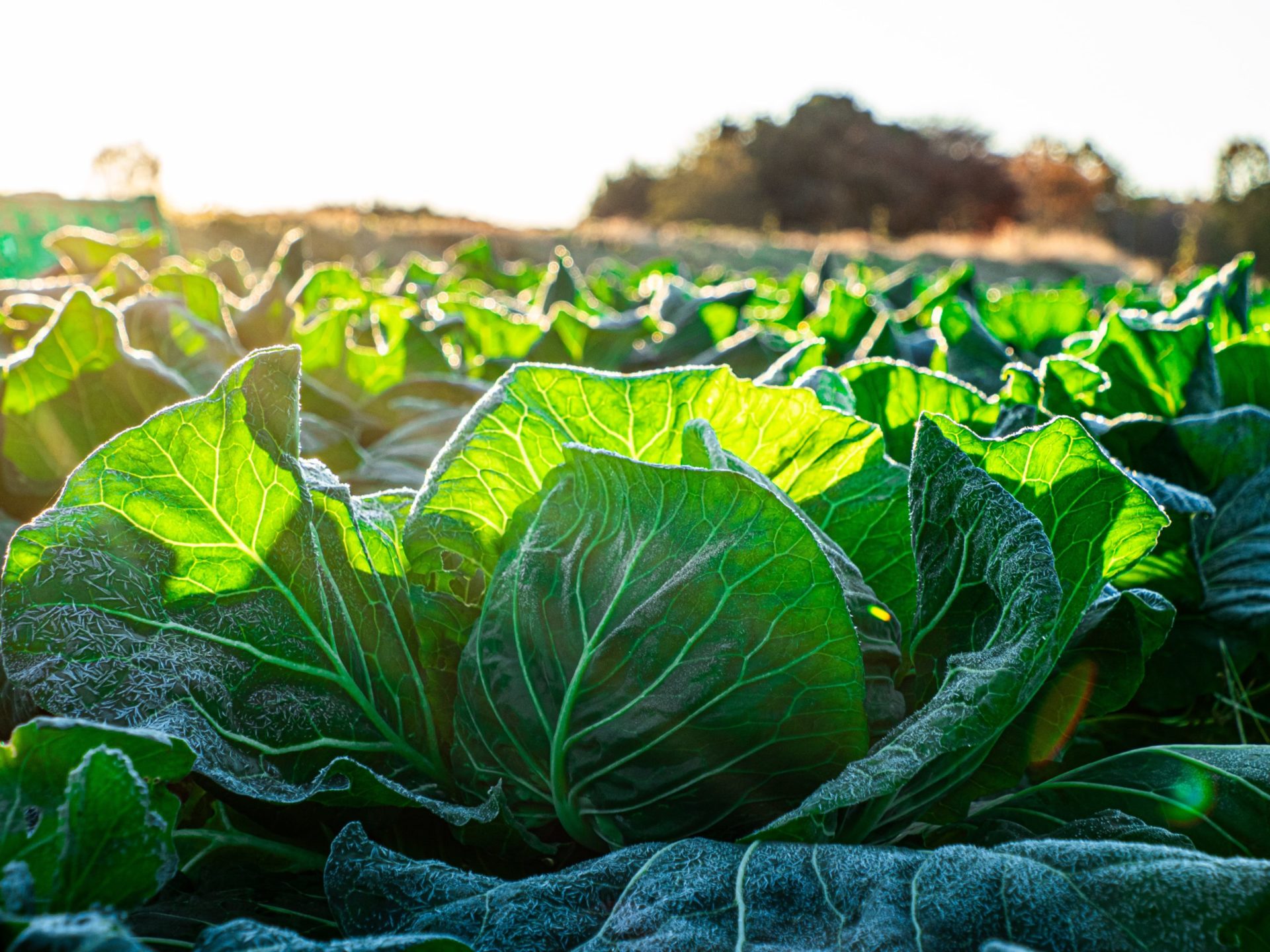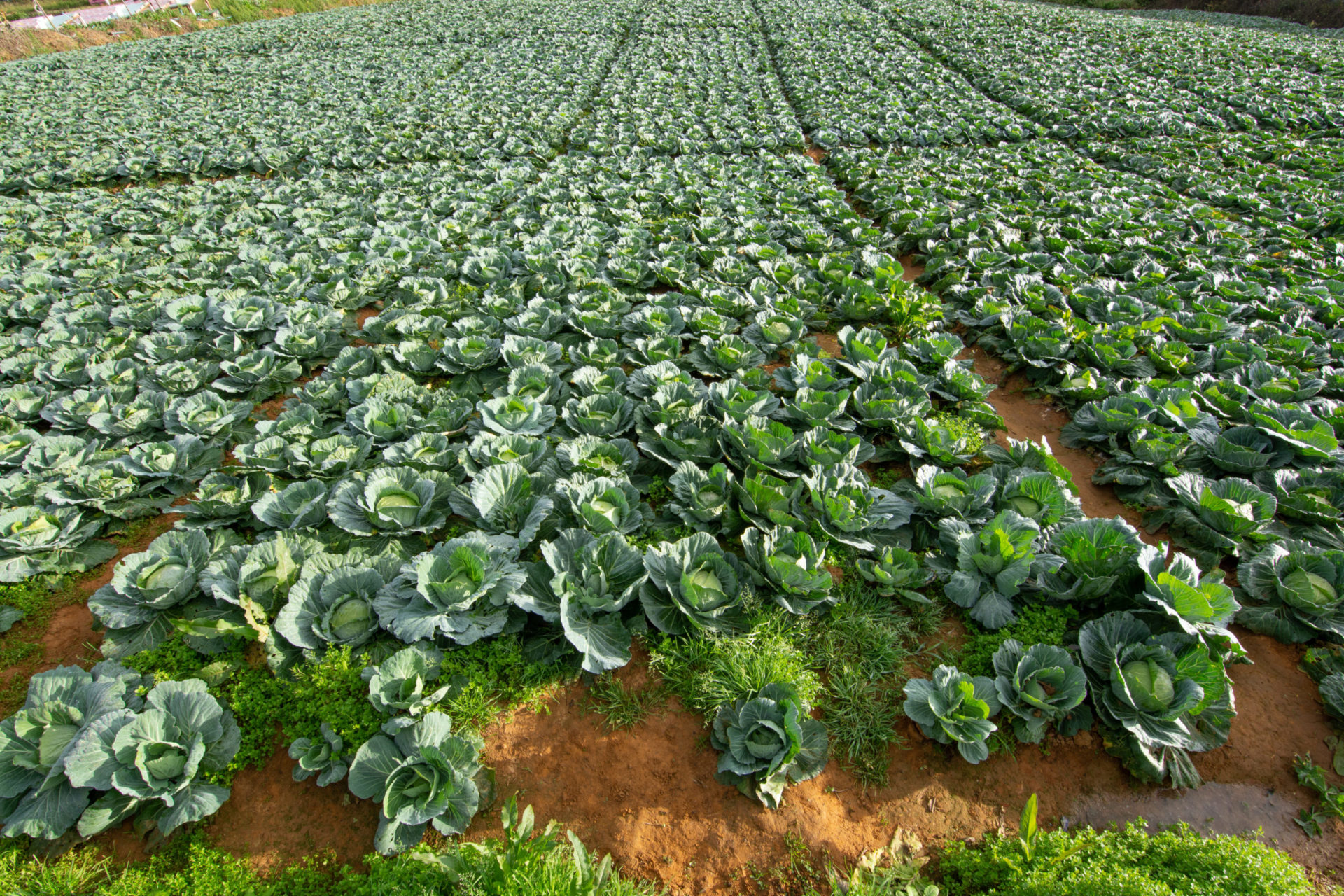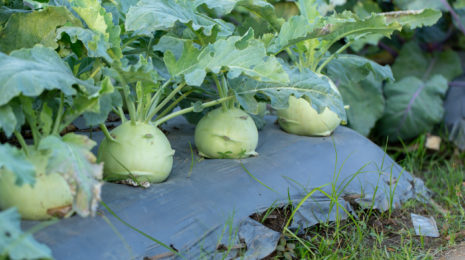There are several ways of growing cabbage, differing in terms of conditions and requirements for the process of preparation and cultivation. One of these methods is growing in the open ground, which will be discussed below.
When To Plant Cabbage
The first question in the planting and growing process is when to start preparing for further planting. The timing of planting depends mainly on the particular variety of cabbage (early, medium, or late maturing), the characteristics of the climate, and, of course, the conditions of the particular year, whether it is excessive rain and cold or, on the contrary, drought and heat.
Early varieties:
- Middle latitudes – first half of March;
- Northern states – second half of March;
- Southern states are the second half of February or early March.
Mid-ripening:
- Middle latitudes – second half of March – beginning of April;
- Northern states – second half of April;
- Southern states – second half of March.
Late-ripening:
- Middle latitudes – first half of April;
- Northern states – second half of April;
- Southern states – beginning of April.
What Varieties To Plant
The choice of varieties for planting should be made on the basis of the conditions in which the cabbage will be grown, as well as the purpose for which you grow the cabbage. Simply put, different varieties of cabbage are suitable for different uses, namely:
- Early varieties are ideal for use fresh;
- Medium-ripening varieties – suitable for cooking summer dishes, pickling and salting;
- Late-ripening varieties are record-breakers for shelf life, both fresh and canned.
Seedling Preparation
The very process of planting begins with the preparation of seedlings; a good seedling is the key to further planting of healthy seedlings and the subsequent harvest.
Seed Preparation
This point is necessary if untreated seeds are used; they must be pre-treated, namely:
- Soak in warm water (45-50 °C) for 15-20 minutes;
- For better resistance to fungi, place the seeds for 3-5 minutes in cold water;
- Finally, you can immerse the seeds in a solution that stimulates growth for 2–3 hours.
Soil Preparation
In the matter of obtaining suitable soil, there are two options: buy ready-made soil for a particular crop in the store or prepare your own.
You can prepare your own soil according to the following recipe. You need to mix certain ingredients in the following proportions:
- 1 part turf;
- 1 part humus;
- 1 tablespoon of ash per kilogram of soil.
Seedling Care
The sowing process begins with the distribution of the prepared soil in containers; pots made of peat-peat mulch are an excellent choice. The following is the algorithm:
- Add water to the soil to make it moist;
- Place the seeds in the soil to a depth of about 1 centimeter;
- To prevent moisture evaporation, cover the container with something or cover it with a film.
- At the end, place the dishes with seedlings in a room with a temperature of at least 20 to 25 degrees Celsius.

Further Care of the Seedlings Includes the Following:
The Final Step Before Planting in the Open Ground Is Hardening, Which Consists of the Following:
- You can start by increasing the intensity of ventilation in the room with seedlings, just as before, without strong draughts. The duration of ventilation should be 2 to 4 hours.
- Then you can start exposing the plants to sunlight, covering them with a loose cloth or gauze.
- Finally, the intensity of watering should be reduced, and the seedlings themselves should be placed in a cooler place.
Growing Cabbage in the Open Ground
Make sure the plants have reached a sufficient stage of development and are ready for transplanting in the open ground before doing so. The height of the plants and the number of leaves should be taken into consideration. A seedling height of about 5-7 inches and 4–7 leaves can be considered optimal.
How To Choose a Place
Cabbage has a number of requirements for the location in which it can be grown, here are the main ones:
- The presence of sunlight throughout the day;
- soil, including loamy, sandy substrate for early varieties, and clay soil or loam for mid- and late-ripening varieties;
- The soil acidity index is between 6 and 7;
- Soil acidity is neutral or slightly alkaline.
Soil and Beds

The soil should only be leveled in the spring.
Planting Cabbage
The first stage of planting is the preparation of holes for each plant; the size of the holes depends on the type of cabbage:
| Type of cabbage | Pit size |
| Early red and white cabbage | 11х15 in. |
| Medium-ripening red and white cabbage | 19х23 in. |
| Late red and white cabbage | 60х70 in. |
| Brussels sprouts | 23х27 in. |
| Cauliflower | 9х13 in. |
| Kohlrabi | 11х15 in. |
| Broccoli | 11х17 in. |
| Savoy cabbage | 17х21 in. |
Further Planting Is Carried Out by the Following Steps:
- A handful of peat and sand, as well as a couple of handfuls of humus, should be poured into the bottom of each hole.
- Add 40 grams of ash;
- 5-10 grams of nitrophoska;
- Mix the above components;
- Add water to the consistency of a liquid pulp;
- Place the seedling in the prepared hole, with its roots in the soil, or in a peat pot.
- Cover the seedling with damp substrate and press around the edges with your hands;
- At the end, cover the perimeter with dry earth.
It is also possible to plant the seeds themselves in beds, skipping the stage of cultivating seedlings. However, this method is more complicated in terms of the further care of young plants and the algorithm of planting, as follows:
- Water the beds generously;
- Hollows are made for the seeds, and then the seeds are placed in the holes to a depth of 1 cm, covered with soil, and compacted;
- The top layer is mulched with peat, sawdust, or straw;
- If cold weather is expected, place a small container, such as a plastic cup upside down, over each planting location and press it into the ground over the seed.

What You Can Grow Cabbage With
If you have a large farm with room for various crops, you need to consider that the surrounding area of cabbage with the following plants is undesirable:
- Cucumbers;
- Radish;
- Beans;
- Potatoes;
- Peppermint;
- Turnips;
- Basil;
- Cilantro;
- Rosemary;
- Sage;
- Cereals;
- Garlic.
Care After Planting
The care of planted plants consists of several procedures, which should be carried out as needed:
Watering

The first 5-7 days after planting, it is recommended to water the seedlings with light streams of water, using sprayers, so as not to erode the root system.
After that, you can water the cabbage on a schedule, depending on the weather: during normal times once a week, in heat and drought every 2–3 days.
Temperature

After adaptation, the ideal conditions are not too hot and dry summers, with suitable temperatures ranging from 15 to 24 degrees.
Feeding
starts as early as the preparation of seedlings and is carried out in several stages:
- Initial fertilization about a week after planting. It is necessary to mix 2 grams of ammonium nitrate and potassium preparation, and 4 grams of superphosphate per 1 liter of water. Such volume of the mixture is enough for the treatment of about 50 plants;
- The next feeding, 2 weeks after the first one, the composition of the solution is the same. If the plants do not look right, you can add a solution consisting of 1 part manure to 10 parts water;
- The last feeding before moving consists of: 5 grams of superphosphate, 3 grams of nitrate and 8 grams of potassium per 1 liter of water.

Loosening the Soil
Every time you water or rain, you should loosen the soil with a hoe to give the roots an air supply.
Mulching
This process is designed to ensure sufficient moisture in the soil; for this purpose, it is optimal to use peat, covering the surface with a layer of 4-5 centimeters. This will retain moisture in the soil, as well as additionally fertilize it and prevent the development of weeds. In addition to peat, you can also use:
- small sawdust and wood bark;
- straw;
- dried grass;
- shredded paper;
- and cardboard.
Possible Difficulties
The main obstacles to growing any garden crop are pests and diseases; the most common of them and ways to combat them are below:
Diseases:
Pests:
Harvesting
The harvesting process has certain peculiarities depending on the specific species and variety. General recommendations are as follows:
- The harvesting of early varieties begins as they ripen, and there is no need for any nuances here;
- Medium-ripening varieties should be harvested closer to the second half of September; if pickling or salting is planned, these varieties should be processed and stored immediately.
- But the collection of late-ripening varieties should be delayed. The late-ripening sprouts are recommended to lie on the seedbeds for a while, even at around zero degrees, to ensure the longest possible shelf life. When it comes to timing, as a rule, late-ripening varieties can be harvested closer to the first half of October.

The Rules Common to All Varieties of Cabbage at Harvest Time Are:
- Collection is recommended in the absence of precipitation, preferably in dry and sunny weather;
- The recommended air temperature for collection is +4 to +7 °C;
- During the picking process, it is important not to drop the sprouts and avoid any other damage.
How To Store Cabbage
Storage: This is something that any vegetable garden owner will think about immediately after the end of the collection of the fruits of his labor. The rules are simple when it comes to cabbage:
- It is advised that harvested cabbage, particularly that cut from the core, be stored immediately in suitable conditions:
- The temperature is 0 to +2 degrees;
- Air humidity at 90-95%
- It is critical to inspect the condition of the cabbage before storing it to ensure that it is whole and formed.
- Before storing, it is not superfluous to dry the cabbage in a well-ventilated place or just in the open sun.
- And probably the most important point about storage is choosing the right varieties to grow with the best rate of friability.

Conclusion
Growing cabbage is a complex, multi-step process, each of which requires attention and consideration of nuances. Nevertheless, this process is quite feasible for any gardener, even one who is not very sophisticated, and the necessary information for the process was given in this material.
FAQ
For seedlings, this figure should not fall below 0 degrees Celsius; well-prepared and hardened seedlings can grow in frosts down to -4 degrees. For active growth, it is better to avoid temperatures below 17 degrees Celsius.
There is no direct evidence of the usefulness of this procedure; in addition, at the time of planting the cabbage, the soil is usually wet enough.
There is no need to do this; this procedure is necessary when sowing is done in the warm season and the soil may not be wet enough; cabbage is not threatened by this, and the presence of roots will only further complicate planting.
Plant 13 to 17 inches apart between beds and 19 to 23 inches apart between individual plants in a single bed.
Certain types of cabbage do not tolerate proximity to others, so mixing species is best avoided.























